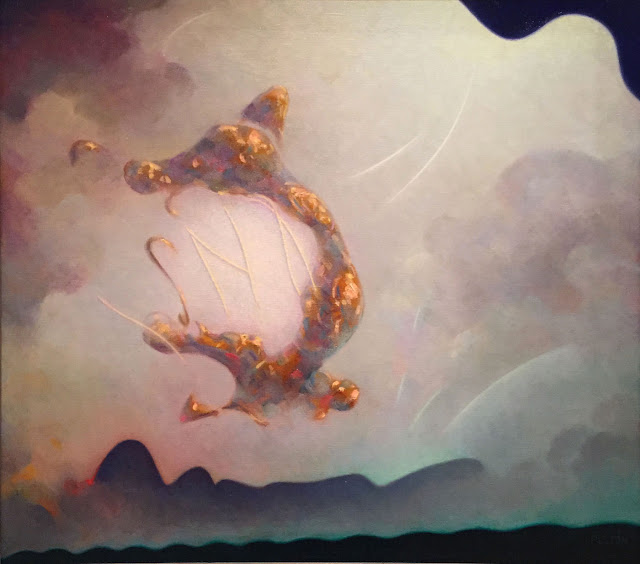Captivated by the spiritual and vibrational aspects of the natural world, Agnes Pelton renders the invisible forces that surge through life. While Pelton is not the only artist included in LACMA’s survey exhibition “Another World,” she is the most compelling and dynamic artist in the Transcendental Painting Group. Interestingly, she was the least active member of the group, and her work was more figurative and less reliant on pure geometric form. Established in the American Southwest in 1938, the group’s manifesto states their aim “to carry painting beyond the appearance of the physical world, through new concepts of space, color, light, and design to imaginative realms that are idealistic and spiritual.” While most artists included in the exhibition adhere to these parameters, Pelton stands out for the ways in which she rendered biomorphic forms and landscapes. Strange entities—chains, whisps of smoke, whirls of light—dance and levitate among cumulous clouds, cosmic skies and inverted sunsets. Her paintings appear to be somewhat grounded in the natural world while simultaneously untethered from reality—an approach particularly evident in the painting Lost Music II (1950), inspired by Pelton’s view of the desert sky in Cathedral City. This work is abstract while also situated in place and experience, which, in some ways, diverges from transcendental ideals. This approach is expressed in the artist’s own words when she states, “the forms and activities expressed are no doubt related to experience, but only as distillations and seen on that plane that is neither past nor future–perhaps aspects of both–where shadow may become sound, and color enhanced to power, or light to radiation.” Pelton’s contribution to American modernism and abstraction seems to transcend any singular definition or categorization. Her paintings feel as relevant and alive as when she created them 90+ years ago.
Los Angeles County Museum of Art
Resnick Pavillion
5905 Wilshire Blvd
Los Angeles, CA 90036
On view through June 19, 2023


